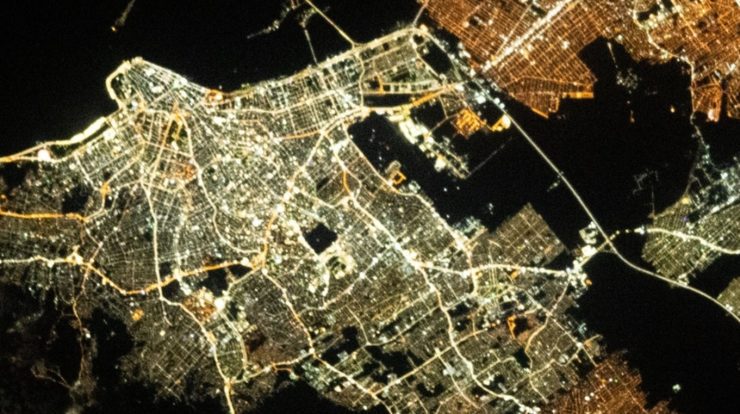
The Porto Alegre metropolitan area is the most densely populated area in Rio Grande do Sul. In 2020, the estimated population was 4.4 million, or 38.2% of the state’s total population. There are a lot of people in a very large, but very small area of space compared to the enormity of the planet.

Photo released by the US space agency NASA (National Aeronautics and Space Administration) Shows Greater Porto Alegre seen from space at night on July 4th. The image was taken aboard the International Space Station (ISS) by an astronaut using a Nikon D5 camera and cataloged by the Space Agency ISS067-E-176701.
In the photo, it is possible to see the city of Porto Alegre up to the region of Villa Assunção, in the southern region, up to the border of Canoas and Alvorada in the north. The image also shows the municipalities of El Dorado do Sul, Canoa, Viamão, Alvorada, Cachoirinha, Gravatay, Sapucaia do Sul, Esteo and São Leopoldo.
In the case of the capital, Rio Grande do Sul, the main luminous streets of the city, such as those of Ipiranga, connecting the center with Viamao, draw attention in the photograph; From Assis Brasil to Cachoeirinha and a fork at Baltazar de Oliveira Garcia; The Protásio Alves from the city center to the east, and the Terceira Perimetral to the east to the airport area.
The BR-290 (Freeway) and the BR-116, stretching from Porto Alegre to Valle dos Sinos, also stand out in the photo, as do the two bridges over Guiba. On the BR-116 axis, the Alberto Pasqualini Refinery (REFAP) lighting between Canoas and Esteio stands out.
It is still impossible not to notice the color distinction of public lighting between the various major cities of Porto Alegre that ends so clearly defining the municipalities. Porto Alegre, for example, appears with more white light while Canoas has more orange light.
The International Space Station has been in space for 23 years, 7 months and 22 days. At the moment, there are seven astronauts aboard the International Space Station. The station makes 15 orbits per day and that’s been more than 133,000 since its launch, based on today’s data. The station serves as a microgravity and space environment research laboratory with studies in astrobiology, astronomy, meteorology, physics and other fields. The International Space Station is well suited for testing spacecraft systems and equipment for possible future long-duration missions to the Moon and Mars.
